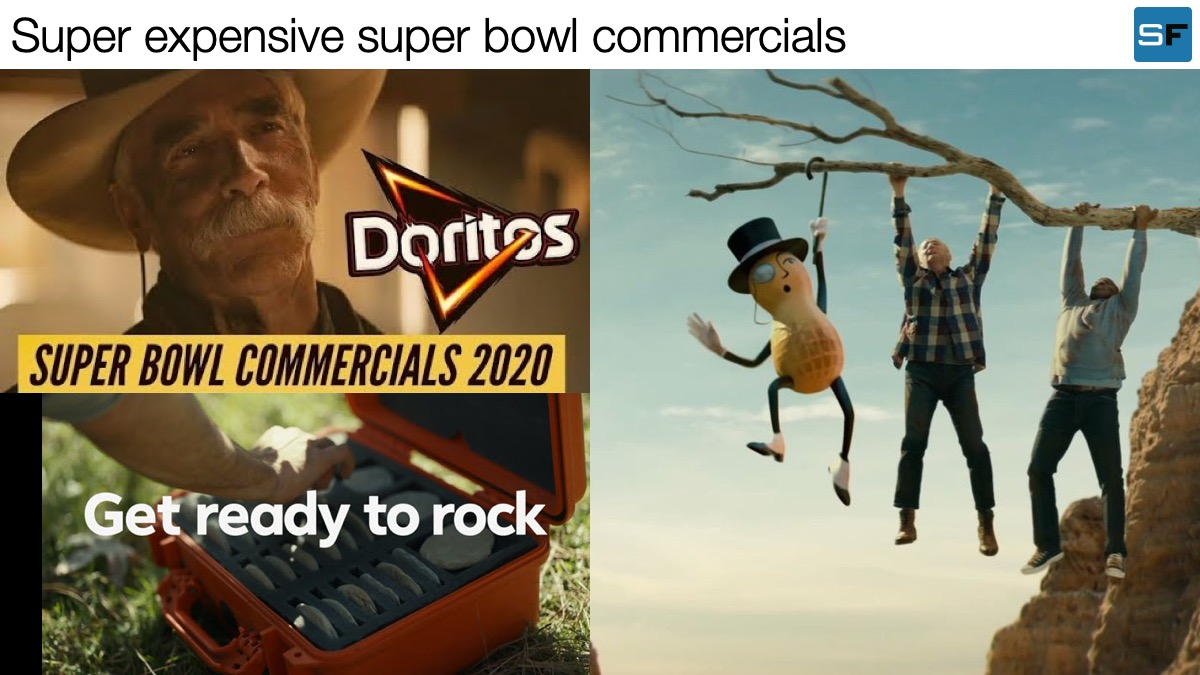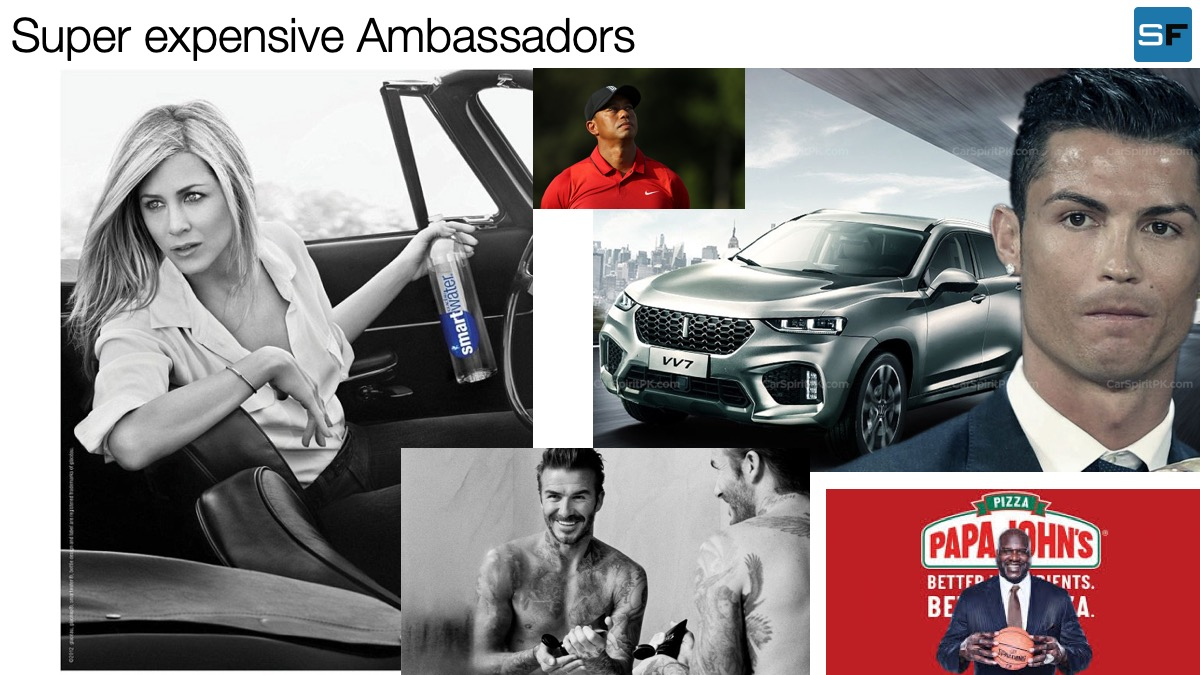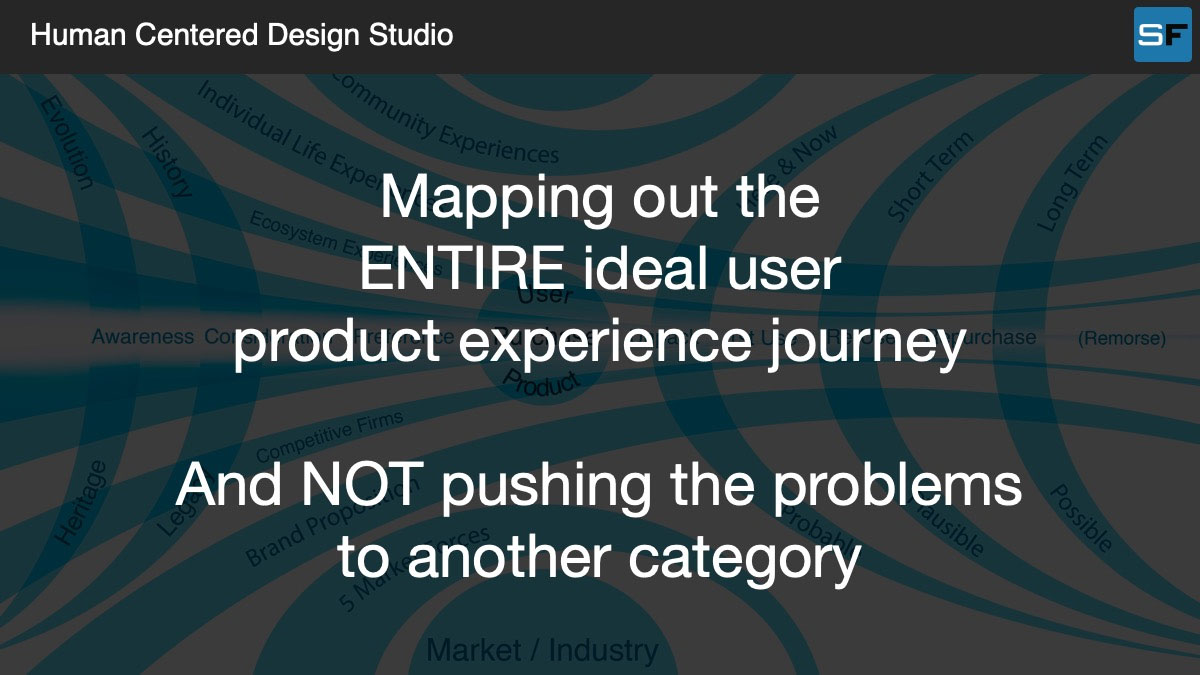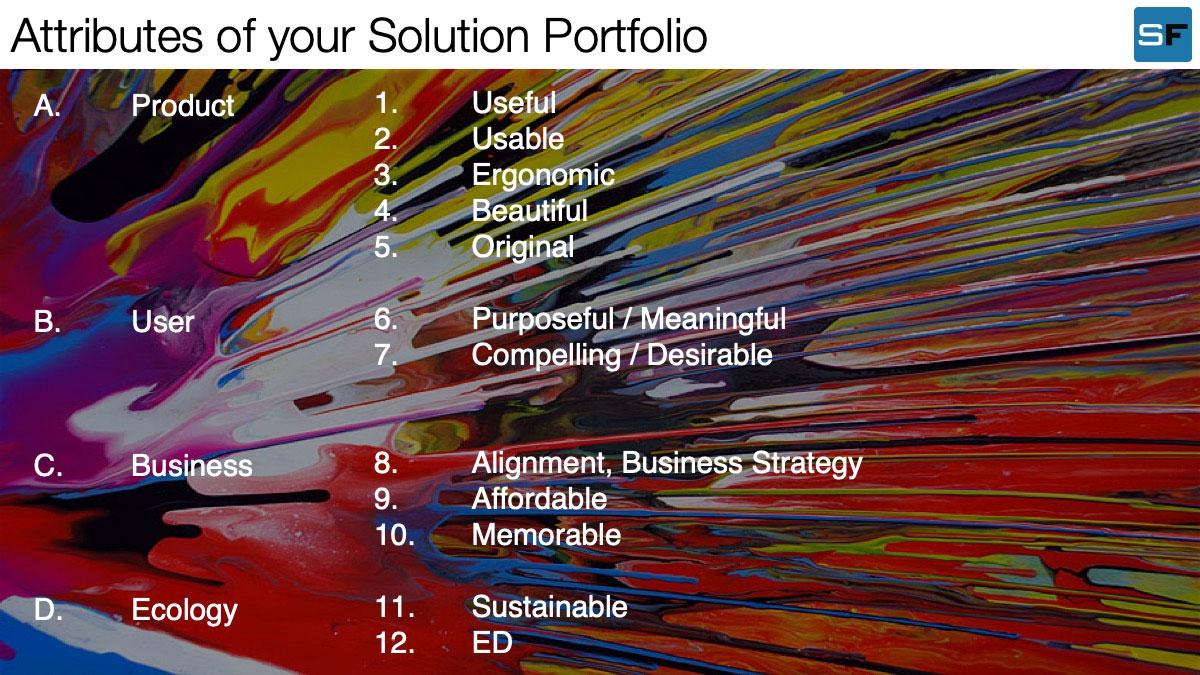Super Bowl. One of the largest and most quintessential American experiences of the year. We all saw it last Sunday, and beyond the game itself, what do we look forward to most about this broadcasting tradition if not the commercials? To be sure, they’re some of the best we see all year. However, what’s one thing we know about Super Bowl commercials? You got it. They are SUPER expensive. This year, one 30 second commercial costs $5.6 million! Still, dozens of companies invest this money every year to get their consumers to trust, have confidence in, and buy their brand. Is this really the way to go?
Marketing is needed. There’s no question there, and no one can say that these aren’t truly amazing commercials. But you still need to ask yourself, as you develop your company and its offerings, “what method are you using to earn that business, to deliver that value, and to get that confidence from your end users so that they buy your product”?

We know that some companies use SUPER expensive impressions on social media and other channels. Is this the real way to go? Certainly, you need to spend some money in this area of marketing. However, we don’t believe that investing millions in this avenue is the ultimate answer.
Again, we know that some companies have SUPER expensive, impressive, and beautiful headquarters, but does that necessarily guarantee or say anything about the quality and value of the product that’s finally delivered to your doorstep by amazon or whoever?
Some companies use SUPER expensive celebrity ambassadors. Take the example below on the bottom left with David Beckham, for example. This is a promotion for a skin care product, but what would my or your skin have in common with David Beckham’s? We’re not him. Just because he uses it and supposedly loves it, does that guarantee anything about the efficacy of the product for your personal situation or mine?

This is why, at Sundberg-Ferar, we stand on the foundational belief that your company’s brand promise must be “squeezed” into your actual product. What makes your business or your product successful? What makes a product inherently good, with intrinsic and instrumental value of its own? Those elements have to be in the product for your entire scheme to work. Your marketing, branding, business plan, and beyond has to also be carried within your product.
Instead of reaping the rewards of a new regulation passed down from on high in the medical or automotive world in order to create a new product, or just squatting on IP to generate a product portfolio, we as industrial designers practice new product innovation by translating the goodness of your business and brand into a good, honest product that delivers on the benefits you claim in your Super Bowl add or social media impressions. Why do we insist on the importance of this? Because while traditional marketing pushes a product toward users, a really great product will naturally and automatically attract users to itself, which is uniquely powerful for sustainable business growth.
That’s our approach: Your product is the only honest “container” of your brand promise. For you, the product makers or manufacturers, humans finally give you their hard-earned money in return for a product – not for your marketing campaign or your brand ambassador. That product or object becomes “whole and sole” in delivering your brand value in that “second moment of truth”: the unboxing of it in the user’s own home, and the way users experience its everyday usefulness, usability, intuitiveness, efficiency and ergonomics. That’s what creates the final value of your brand.

To develop this thought further, product makers and manufacturers, whether big or small, are made up of disciplines, teams, departments, or individual staff members that are categorized by their perspective relative to the production of the product or to business growth. For example, marketing, strategy, engineering, business development, etc. Companies are trained to think in terms of these categories and separate functions. On the receiving end, however, you have humans. Humans don’t work in these same boxes. Humans are curious, creative, caring, imaginative, intelligent, resourceful, and most of all, emotive! Humans are ultimately in pursuit of happiness. Ask any user of any product across any category, and ultimately, each one wants to be happy. Our job as industrial designers is to figure out how to add those attributes to a product in that emotive world. Good design is managing not just the functional attributes, but also knowing how to translate those into the emotional attributes of a product. Products shouldn’t cause pain, agony, frustration, and even helplessness in users’ lives. If this is the case, their loyalty to your brand will corrode. Our job is to help prevent that.
Let’s look at it now from the business perspective. Talk with any business person, or anyone who has their MBA. What tools do they use? Business tools are always similar to what you see below. Full disclosure here, I am an Industrial Designer and that’s my first love, but I did go to the dark side for a bit and completed an intensive Executive MBA degree at MSU. Having experienced this first hand, I can say that we absolutely need the business perspective for new product innovation and design. These tools are useful and good. However, there are aspects missing from this tool palette for which design offers a solution. Any successful product is a blend of 3 elements, and this includes technical and emotional attributes as well as commercial/business attributes.

Designers can’t change the world alone. Designers with business strategists can. Both perspectives need to be aware of how the other thinks. Thankfully, this is starting to happen now. Take a look at the covers of Harvard Business Review and other business journals. Look at the words they’re using: “curiosity”, “culture”, “meaning and purpose”. The business world is finally beginning to speak the same language as designers. One-hundred years after the start of the Bauhaus, and the industrial design perspective, which the US design community has also been advocating for over the last 51 years, is finally becoming part of the business vernacular too. Right now, we’re seeing widespread co-influence between the design and business worlds, which means now more than ever, we should be working together to bring value to our users and help the entire equation.
Speaking of purpose and meaning, let’s talk about a company’s starting point. Take a second to think about the mission and vision statement of any real company – dead or alive. What do/did they aim for? What do/did they try to solve? What is/was their claim? Don’t look it up, or write it down or anything. Just keep it in the back of your mind. Most companies always start by looking at macro trends and micro trends, and do tons of research to find out what it is that users will love. They try to find out what is that ideal end user experience, whether it’s enjoying a glass of wine on the beach, treasuring time with family during a camping trip, or watching a game of football like the Super Bowl. Then once they feel they’ve figured it out, they go about creating a new product. This is all good. We actually hold that these research activities are the most important part of starting the process of new product development, and we plan and execute design research with our clients in most, if not all the projects we work on. The problem is that while most companies set out to design a product that everyone loves, what they end up with is a product that nobody hates. It becomes commodity. This is why we advise our clients to stop trying to be all things to all people, and start by being something to someone. (For more on that idea, read Bsomething2someone.)

Now remember that company you thought of in the last paragraph? Chances are their mission and vision was a very good, noble and worthy cause. Almost all companies start with good ideals and intentions, but somehow, they still end up with difficult, painful experiences, and products. Actually, 85% of new companies in the US – even though they were trying to create great products – fail in the first 3 years!
What went wrong? What’s the missing link between those good intentions and the actual delivery? The missing link is mapping the entire user experience, not just in your category but across the entire ecosystem. Companies that don’t do this create products that simply push the pain points and problems into an adjacent category, or worse, that create frustrations in their own category. Hence why cross-category product design is so important.
When you design a toaster for example, you shouldn’t just think about the design in the context of the kitchen category. You also have to think of it in the larger context of connectivity, digitization, and even the smart city as a whole. Then you can really bring it down to the product level by looking at it from the perspective of a smart city, down to a smart home, down to a smart kitchen and finally, down to a smart toaster and how its use will play out across its entire ecosystem. The user, when he or she makes their toast in the morning, doesn’t say to him or herself “now I’m using a houseware product”, and when they put on their shoes, “yes, now I’m using a footwear product”, and when they get in their car “oh look, now I’m in the mobility category” etc. The user flows in and out of these categories seamlessly, and hopefully frictionlessly.
It’s the product making and manufacturing side, including designers in some cases, that create these categories, and we’ve watched this pitfall trip up companies over and over as they try to create great products. We must solve for the entire user experience as it relates to your product, and chart it all out. That’s where Sundberg-Ferar is strong because we work across diverse industries with all kinds of companies – big, small, OEMs, Startups, and everything in between. We’re always cross-pollinating and cross-referencing the ideal user experience and human behaviors between these various categories, and we’ve been doing this for over 86 years. We designed toasters, vehicles, washers, dryers, construction tools, future scenarios, and more back when our studio began in 1934, and we still design all those things today.
Your product is the only honest “container” of your brand promise. For you, the product makers or manufacturers, humans finally give you their hard-earned money in return for a product – not for your marketing campaign or your brand ambassador. That product or object becomes “whole and sole” in delivering your brand value…

Good design is never done in isolation. In addition to looking at the interaction between your product and your users, you also have to look at the entire physical ecosystem within which your product exists. Apart from the human psychological perspectives, which must also be addressed in the design process, (and which we also do), there is the Product Ecosystem Forcefield (PEF), which means all the other products that interact with yours in that ecosystem. Take a kitchen or an operation theater for example. In both cases, there are hundreds of objects, machines, screens, notifications, and tools with which your product needs to work in tandem. Which product or function needs to be in the forefront at any given time in these product ecosystems? What needs to fade into the background? How will you make sure that in this particular mix of different products, including yours, each one is not competing with and interrupting the others, creating a cacophony for the user. If the user is focused on cooking the perfect recipe, how can all the products in that kitchen ecosystem, including yours, work together to accomplish that goal so the user can give their full attention to what needs to be done? Understanding how your product will be consumed and in what context is key to its market success.

In the image below, you can see the connection between business values and design values. I won’t go through each one here, but take a look at number 10. Industrial Design will help make your product memorable which translates into that sought-after brand loyalty from the business perspective. Brand loyalty always flows from the product experience. For example, if Dad has a great experience with his Subaru and just loves that car, chances are, when his son is the right age and needs a car, Dad will think about getting his son a Subaru. In this case, the car was a memorable product with a compelling experience that translated into loyalty for the brand.
Take a brief look at number 11 too. We’ve seen a significant uptick in concern and conversation around sustainability in our discussions with various companies, and not just startups but large corporations and OEMs too. This is a great encouragement to us and many others. Even though implementing sustainable practices tends to still be more expensive at the moment, as we see more and more companies get on board with these efforts, it’s only a matter of time until supply chains mature to offer sustainable materials and practices at reasonable prices to make sustainability a wide-spread reality in our economy.

Bringing it all in, as you can see in the image below, engineering and industrial design of products are often the end result of what we do here at Sundberg-Ferar, but what comes before is making sure we’re solving the right problems for our clients. This is the part of our design process that allow us to be alert and grasp macrotrends and microtrends, evolving human needs and behaviors, micro-shifts in culture, emerging categories and morphing ecosystems, which in turn enable us to understand new business opportunities and innovation pathways for our clients. The design process is a unique solution for how you and your company can understand where you are, where you want to go, and how your product experience can lead you there.
Remember, as you go forward in growing and building your company, you will always have the Wall Street Demands from the business perspective, which can be summarized with Porter’s 5 Forces. You probably know them by heart: Market Competition, Threat of New Entrants, Threat of Substitutes, Bargaining Power of Suppliers, Bargaining Power of Buyers. However, you will also always have the Main Street Demands too – the human needs, which can be summarized with the 5 Emotional Forces: Culture, Context, Value, Behavior, Beauty. As I mentioned, no product can be designed in isolation. Any successful product must be a blend of both these perspectives. That’s why, as Paul Rand said, “Design is the best business plan.” With all that in mind, we hope you’ll get out there and create great products that champion your company name and get your users singing your company’s praises from the rooftops!
Any questions in your mind about the ideas in here, or do you just want to talk shop about industrial design & business? Give us a ring or drop us an email at hello@sundbergferar.com . We’d love to talk!
Author

Jeevak Badve
Principal, and Director of Strategic Growth
Jeevak, Principal and Director of Strategic Growth, brings energy, passion & curiosity to his role at Sundberg-Ferar. With his unique blend of education and experience in industrial design, engineering and business, he is a rallying voice for the alignment and optimal inclusion of the end user’s un-met needs, and unspoken wants in the core value proposition of a company’s products & service portfolio to generate sought-after shareholder value.


